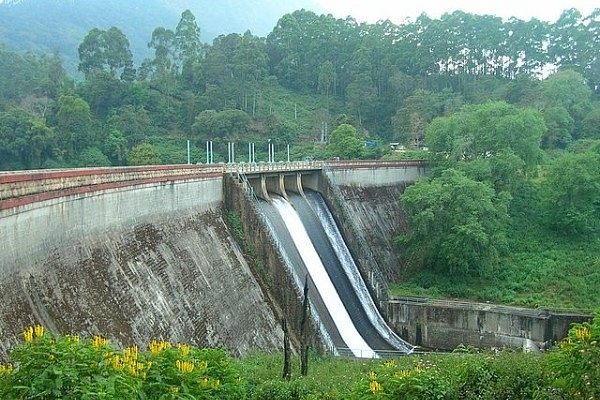
Kerala Floods: Could Better Dam Management Have Saved Life And Property?
Accumulation of water up to the brim in Kerala’s dams, and then its sudden release, resulted in massive flooding.
Sporadic release of water could have reduced the intensity of the disaster.
Harrowing sights from Kerala dominated the past few weeks as the state battled the worst floods in nearly a century. Even before the monsoon rains started lashing Kerala, the NITI Aayog’s Composite Water Management Index, released in June 2018, ranked Kerala in twelfth place on water resource management, as it scored below the median score for water management practices.
Further, the Home Ministry, in its Flood Vulnerability Index, listed Kerala as the seventh most vulnerable state to flooding. This index was worked out on the basis of parameters such as areas which witnessed flooding in the period ranging from 1950 to 2016 and metropolitan and large cities most susceptible to flooding, among other factors. This underscores the prior knowledge that Kerala faces a significantly higher threat level vis-à-vis flooding.
Now that the waters are receding, questions are being raised in various quarters as to whether the situation arising out of the unprecedented rainfall could have been handled better. Most of these questions have been directed at the dam management practices of the state as the shutters of 35 dams were opened within a short period of time, something that had not happened before. It is argued that the release of water from overflowing dams combined with record rainfall worsened an already precarious situation.
Dam safety experts have opined that, ideally, water should have been released from dams before they reached full reservoir capacity. This would have prevented the mass evacuation of thousands of people living on river banks as swollen waters breached banks and flooded habitations, rural and urban alike. Experts have also stated that best practices in dam management require the same to be relatively empty before the onset of monsoons, which was not the case in Kerala.
One of the reasons attributed to authorities’ reluctance to release water from dams before they filled to the brim relates to the fact that the Kerala State Electricity Board (KSEB) and the Irrigation Department operate all the dams in the state. It is believed that storage of water for electricity generation and irrigation takes pre-eminence in calculations of both bodies when it comes to determining the release of water from the dams.
While dams were steadily being filled to the top on the back of excess rainfall recorded in both the months of June and July, the lack of a reliable forecast from the India Meteorological Department and the Central Water Commission further hampered the decision-making ability of the state authorities vis-à-vis early release of waters from dams. It would also be pertinent to note here that the National Flood Forecasting Network has no stations in Kerala, an issue that needs to be looked at seriously.
The damage resulting from floods could no doubt have been mitigated had best practices in dam management been followed. It has been estimated that 20-40 per cent of the damage caused by floods could have been avoided had there been a timely release of water in the two-week period when rains subsided before picking up steam from 8 August.
While the current floods have wreaked havoc with an estimated loss of Rs. 9,512 crore, it is important that the right lessons are drawn from this disaster. Extreme weather conditions are becoming a common occurrence due to climate change and, while there may be difficulties in predicting the intensity or occurrence of such freak events, it is important that best practices in dam management are adopted to ensure that a situation similar to the Kerala floods is not repeated in any part of the country.
Also Read:
Flood Havoc: Did Kerala Err In Ignoring Gadgil Panel’s Recommendations?